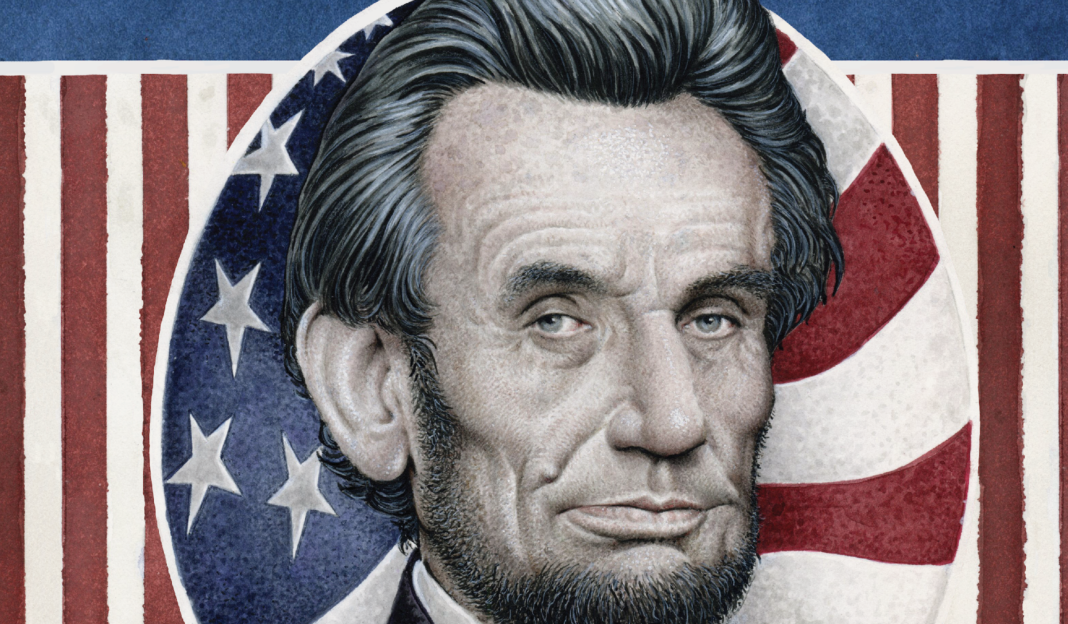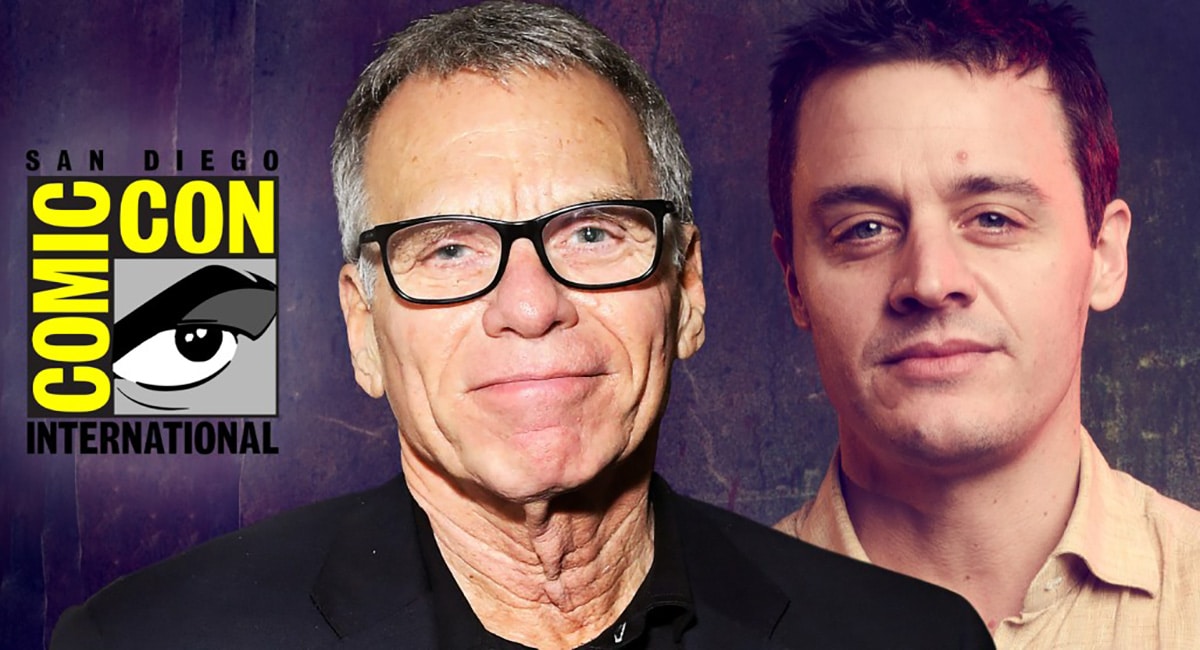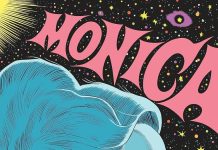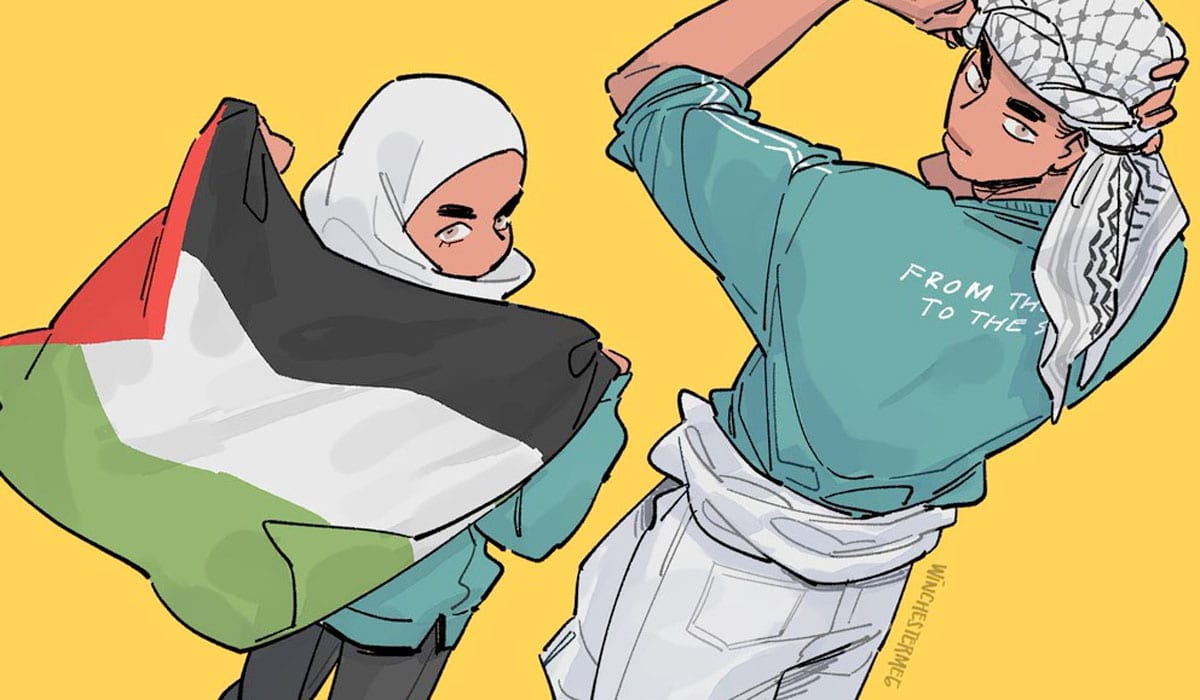The President of the United States is one of the most popularly depicted people in all of the culture, whether pop, academic, or historical. To be a President means that, for better or worse, a version of your visage will be recorded in books for time immemorial. In this way, American Presidents from George Washington onwards are never out of the limelight entirely, even decades or centuries after their deaths. And because of the overall cultural and mythical familiarity with (most) Presidents, especially figures such as Lincoln, the Roosevelts, Kennedy, or Obama, having yet another book about the select group of men who have occupied the office may not be warranted.
But cartoonist and portraitist Drew Friedman shows why it’s healthy and necessary to take the time to look upon the Executive with fresh, independent eyes. Friedman is a creator who defies boundaries, media, and form. An underground veteran whose work appeared in such outlets like RAW, MAD, and The New Yorker, Friedman’s style is defined by his “warts and all” philosophy. The portraits he creates are not hagiographic, instead opting to look at his subjects with a discerning eye towards human particularities: liver spots, wrinkles, and scars are all displayed prominently. In his previous works showcasing old Jewish comedians or the legendary figures who created the comic book industry, Friedman drew spectators into by leaning into the grotesquery of the human form, with all of its imperfections in plain view.
For his latest book, All the Presidents (Fantagraphics), Friedman took his inimitable style and applied it to the eponymous subjects. The book is literally portraits of every president from George Washington to Donald Trump. In many ways, this book is a stark break away from the partisanship of the contemporary moment and a chance to strip away the sheen of the “presidency” and look at the 44 men (and yes, sadly, all men) who—through cunning or pure luck—achieved the opportunity to occupy the highest office in the land. It’s a remarkable achievement of portraiture and cartooning. Each portrait is stuffed with layers of meaning, and trying to read each expression, each crinkle of the forehead, and each neverending stare is an exercise of close reading and imagination.
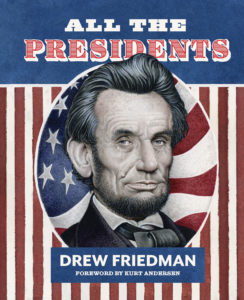
DREW FRIEDMAN: Thanks AJ. I’ve been drawing presidents since my SPY magazine days back in the mid-eighties, beginning when Ronald Reagan was still president. That was the first political work I did, and I continued creating politically themed work featuring George H.W. Bush, Bill Clinton, George W. Bush, and Barack Obama for the next few decades. I’ve drawn Trump a number of times, mainly back when he was just a NY real estate developer/huckster, but I haven’t drawn him much recently aside for a full-page piece for MAD. I’ve moved away from editorial and politically-themed work to concentrate on my own personal book projects. Creating this book of president portraits stemmed from a drawing I did of Abe Lincoln four years ago. I realized I had never drawn him, one of the most iconic faces in history, and after posting it on Facebook and getting a lot of good responses, it just grew organically from there. Creating these portraits was somewhat cathartic for me, a way of looking back and trying, if at all possible, to understand what lead to the current situation in the White House, if that can ever, even be explained.
In many cases, I didn’t even know what certain presidents looked like, for example, Franklin Piece or Zachary Taylor, so that was interesting from a learning perspective. I’m by no means a presidential historian so I was learning about these 44 men along the way, much like I did with many of the comic book heroes I created for my two books showcasing them. That always makes a book project more interesting for me, not going into it as an expert on the subject.
Mainly though, I wanted to prove to myself, and others, that I could create an entire book that didn’t feature any Jews! Although, I did sneak in several into my comic strip introduction, including Lenny Bruce and my old boss at the New York Observer… Jared Kushner.
FROST: I think in some ways, bringing something new to likenesses that we’ve absorbed as a culture is a supreme challenge? For this project, did you take a look back at the portraits by Gilbert Stuart or John Singleton Copley to get a sense of how presidents have been portrayed by artists throughout history? Or was it more important to follow your own instincts on how to render each president?
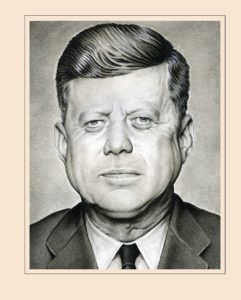
FROST: What was the average amount of time you took for each portrait? Who took the longest? The shortest? Would it be wrong to assume that modern presidents, who have their pictures taken every day, are easier to recreate on the page because of the vast reference material? Does that actually make the creation of the final piece more difficult?
FRIEDMAN: Each portrait took about four days, more or less, from rough pencil sketch to finished painting. I don’t think anyone took much longer, although some of the earlier presidents, with their ruffs and frilly finery, took a little extra time to render. Yes, with the more modern presidents, probably beginning with FDR, the reference is abundant. I remember sifting through thousands of Getty images of Jimmy Carter, most of them showcasing his smile, which I didn’t want to highlight.
That’s not the case with the earlier ones. With Washington, only a few paintings and etchings were created. I really tried not to base any of my president portraits on photos or paintings that have been widely seen. So again, with Washington, I did some combining, basing his head on one source, matched to a body from another source, and so on. I learned that there were a total of 66 photos that were shot of Abraham Lincoln during his lifetime, the most recognizable of them were taken when he was the bearded president from 1860-1865. I didn’t want to base my cover image of Lincoln on any of those iconic photos that Brady shot, so I found a more obscure photo of a beardless Lincoln from 1859 when he was still running for president just before he received a letter from the young girl suggesting he “grow whiskers,” and then added the lion’s mane beard onto that, producing the color portrait that’s featured on the book’s cover.
FROST: Which final portrait surprised you the most?
FRIEDMAN: Well, I don’t think I was actually surprised by any of the final portraits. I knew what I was getting into which each subject. I create a pretty tight pencil sketch on Strathmore bristol, the 500 series… the only bristol I’ll work on, which I then paint directly on top of, leaving the possibility of ever being surprised unlikely.
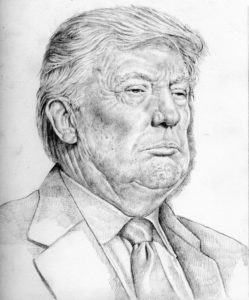
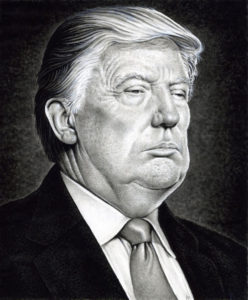
FROST: I wanted to ask you about your choices regarding posing and staging for each president. For example, Theodore Roosevelt is often rendered as quite a vigorous individual, a sportsman, and a man who loved nature. Yet, in the book, I feel that he looks quite subdued. I guess, what I’d like to know is, what factors did you take into account before getting to the final rendering for each president?
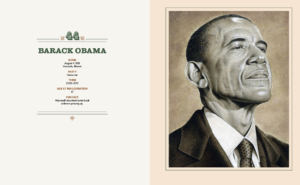
Sure, Teddy Roosevelt is all of those things and more, and again, Jimmy Carter usually had that broad, toothy smile. But I didn’t want to go the obvious or expected route in presenting any of these men, nor did I want to editorialize, even if I was rendering a subject I especially liked or disliked. I attempted to keep an even tone throughout, this book is not about my personal feelings about the 44 subjects, rather an objective book of portraits drawn in my style. Perhaps, people can pick up any subtle hints that might, or might not be found within their faces.
FROST: I think it’s obligatory I ask about the President Trump portrait. What were the particular challenges creating that piece knowing that everything related to Trump is a tinderbox ready to blow?
FRIEDMAN: I have to admit Trump was the trickiest subject. I didn’t draw these 44 men chronologically, I drew Lincoln first, then jumped around to more recent presidents and then back again. I did save Trump for last though, mainly because I just wasn’t sure how to approach him. I’ve drawn him in the past, with crazy expressions, pinched lips, faux-anger, yelling, etc. I sketched out a few Trump drawings but I wasn’t satisfied so I held off. In a way, as the current POTUS, his portrait was the most important to get right, the image that closes the book. So I finally decided to go with a darker, more somber approach, hopefully reflecting his inner soul rather than the easier goofy or pompous expression.
FROST: In your mind, what is the line between pure cartoonist and pure portraitist? Is there?
FRIEDMAN: Hmm, not sure I can properly answer that. I’ve made a career of jumping around, one critic called me a restless artist which I guess is true. I’ve been called a cartoonist, comics artist, illustrator, portrait artist, etc, so I don’t think I can be labeled, which I like. I’m not a pure cartoonist or a pure portraitist, I suppose I’m somewhere in between. The one thing I know is I don’t ever want to be locked into any category or deliver what’s expected, again why it was important to me to present a book with no Jews in it. In some people’s minds I was becoming the artist who was only drawing Jews… which… is not a bad thing! And, my next project which I’ve begun working on will include more than several of the chosen people, so stay tuned.
All the Presidents by Drew Friedman is available now from Fantagraphics. Starting November 2nd, The Billy Ireland Cartoon Library & Museum will present Drawn to Presidents: Portraits and Satiric Drawings by Drew Friedman. Follow Friedman’s blog for updates and behind the scenes musings.


